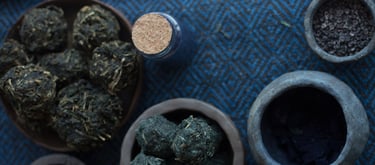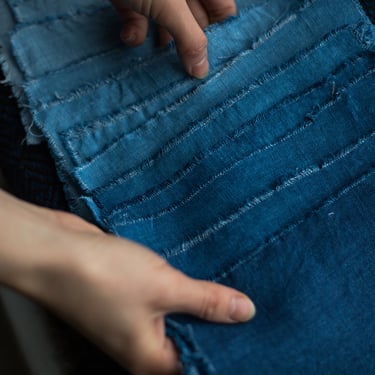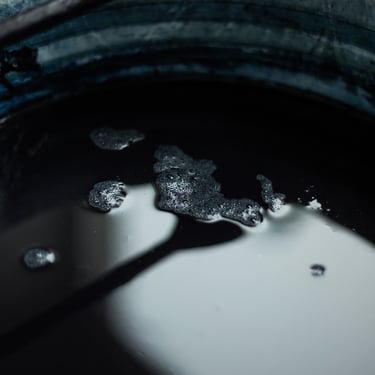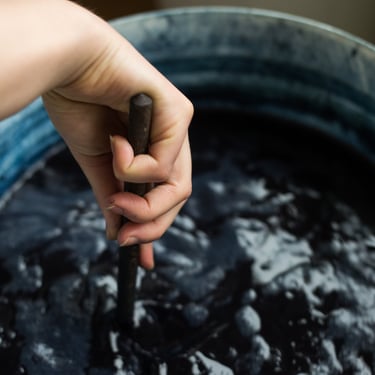
Indigo is an ancient dye that has left its mark in nearly every culture across the globe. I dare say it's a dye that, over millennia, has cultivated its own culture. It entwines together stories, beliefs, traditions, and techniques—practices rooted in centuries past but continued today worldwide.
INDIGO - THE BLUE OF A THOUSAND NIGHTS


Indigo balls. Raminta Beržanskytė. 2019
Today, we know that indigo pigment is extracted from the leaves of nine genera of plants. The origins of this process trace back to the Neolithic period. Yet, it remains a mystery how humanity discovered that within green leaves lay the deepest, richest blue hues. This intrigue stems from the fact that the substances in plants responsible for dyeing fabrics blue—indican, isatan A, and isatan B, also known as indigo precursors—are invisible, colorless, and odorless. Extracting these particles, converting them to the indigo pigment, preparing the dye, and the act of dyeing are all intricate chemical processes. They demand profound knowledge and expertise. As such, textiles dyed with indigo often hold great value, are used for ritualistic purposes, and boast the dye's resilience to light, water, and friction. This enduring quality led to indigo being known as "the color of kings and the king of colors."





Over the years, I've become captivated by indigo, its rich history, traditions, and inherent complexity. I've delved into growing, harvesting, and extracting the pigment, experimenting with recipes both contemporary and those dating back to the XVI century. To further my understanding, I've journeyed to places like France and Japan, always eager to learn more and uncover new insights.
© Forests & Meadows 2024
Vilnius, Lithuania
LT-08200
hello@forestsandmeadows.com